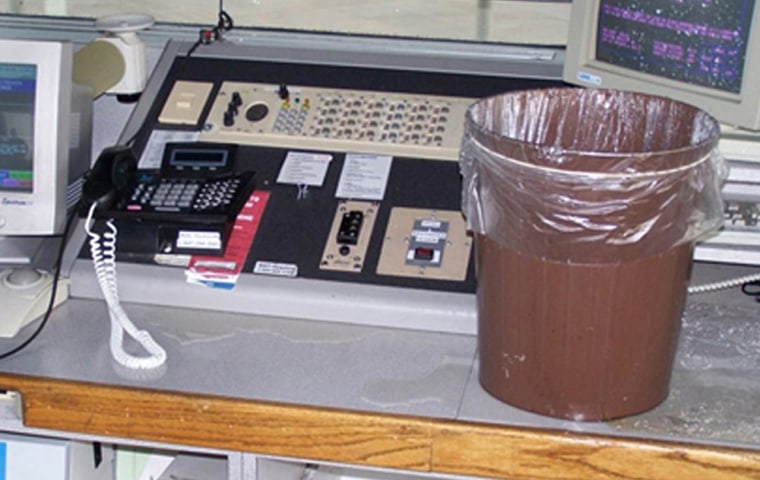Air traffic controllers told Congress on Tuesday that poor maintenance of their aging work places has hampered and harmed them and could endanger the flying public.
The Federal Aviation Administration, which employs the controllers, has not given priority to maintaining and preserving air traffic control facilities, some of which are 40 years old, Patrick Forrey, president of the controllers’ union, said.
“The resulting environmental conditions have jeopardized the safety of workers as well as the effectiveness of the equipment they use — both of which can negatively impact the safety of the air traffic system,” Forrey testified before the House aviation subcommittee.
“We recognize that we have a backlog of maintenance and repair,” said Bruce Johnson, FAA’s vice president of terminal services. “And we are taking steps to reduce that backlog.”
But some FAA facilities “have aged to the point where the responsible thing to do is replace them,” Johnson said, because they “have so many issues that to repair and remediate them indefinitely would be financially unsound.”
He said this was particularly true because the agency is moving to replace its land-based radar control system with a satellite-based system, called NextGen. The new control system will allow planes to fly closer together, opening room for more planes in the nation’s currently saturated air space.
“That’s nonsense,” said Rep. James Oberstar, D-Minn., chairman of the full House Transportation Committee. “The FAA can’t hide behind modernization that’s going to take years. They need to fix these facilities now.”
Subcommittee chairman, Rep. Jerry Costello, D-Ill., complained that for three years running Congress had authorized $3 billion for FAA facilities and equipment but the Bush administration had only requested $2.5 billion.
Johnson responded that “$2.5 billion is adequate for the amount of work we can get done.”
The subcommittee’s ranking Republican, Rep. Thomas Petri, R-Wis., said, “The FAA’s maintenance backlog is not declining. It is growing.”
Petri said this was particularly crucial for the future of the $15 billion NextGen system, because “we cannot put our brand new systems into buildings not fit to house them”
But Rep. John Mica, R-Fla., said, “It does not make sense for FAA to continue to maintain old, obsolete facilities.” He argued that some Democrats and union members were trying to prevent consolidation of facilities that would close outmoded ones.
Forrey and several Democrats on the subcommittee responded that they merely wanted FAA to consult more with its workers in planning the new system.
Johnson said that repairs and maintenance affecting safety “as always are our first priority.”
Water leaks, obscured sight lines, toxic fumes, mold, asbestos, pest infestations and poor heating and cooling were reported in a survey by the National Air Traffic Controllers Association of its field representatives at the nation’s 314 airport towers and traffic and radar control centers. Responses were obtained from 220 sites.
Forrey said:
- Seventy-five reported water leaks, including six with frequent leaks directly over controllers or equipment. At the Atlanta Center “controllers have had to hold an umbrella over the radar scope in order to see the planes and hope they do not get electrocuted while working.”
- More than 100 facilities reported extreme temperature variations because of poor heating or cooling. Because of recurrent condensation on the San Juan tower windows “controllers are sometimes ’blind,’ without the ability to scan the runways or taxiways.”
- Operations have been interrupted and some controllers taken ill because noxious fumes entered their work place, including poisonous carbon monoxide at the New York Terminal Radar Approach Control in April and welding fumes at the Dulles airport tower outside Washington, D.C., in May.
Of the 220 facilities reporting, 62 rated their conditions poor. Another 18 called theirs “outright dangerous” and said they “were concerned with their personal well being as well as the facility’s ability to handle the daily aircraft operations.”
Earlier this year, the FAA selected teams led by Lockheed Martin Corp., ITT Corp. and Raytheon Co. to compete for a stake in the NextGen contract. The first portion of the deal, worth roughly $2 billion, is expected to be awarded in August.
